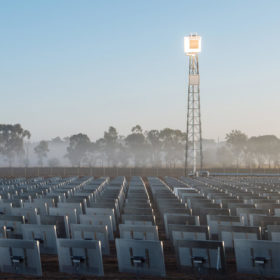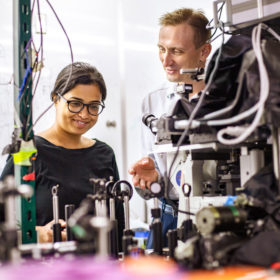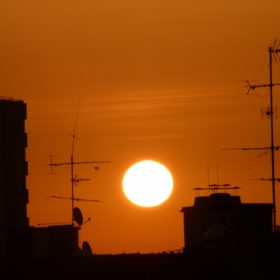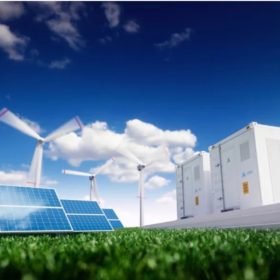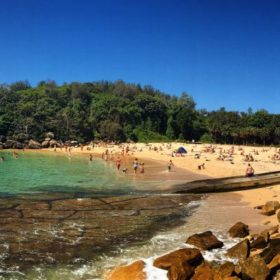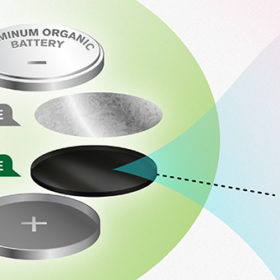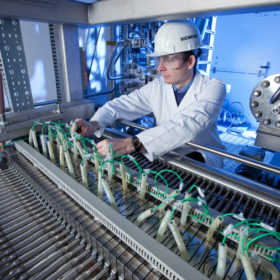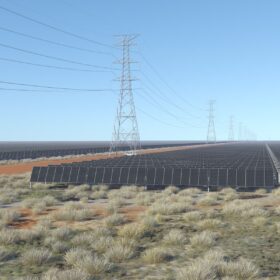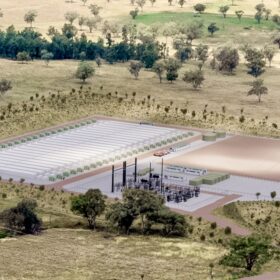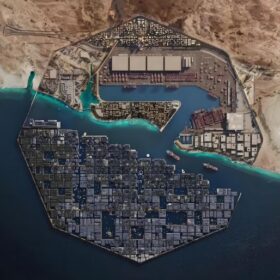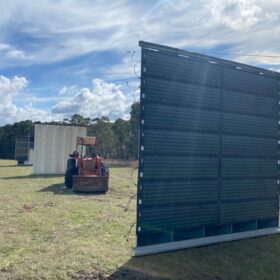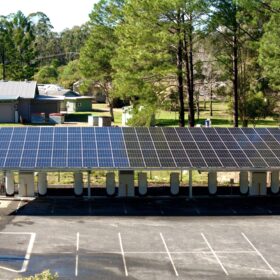CSP innovator Vast Solar wins International Energy Award
Aussie company Vast Solar wins Technology Innovation Award at the International Energy Agency’s (IEA) SolarPACES 2019.
Questioning the quantum behavior of perovskites
Scientists at the University of Texas have made a discovery they say has “altered the understanding of the fundamental properties of perovskite crystals”. Their findings could improve understanding of defect formation in perovskites, leading to devices with enhanced performance and stability.
New antenna for a better photon harvest
An Italian research team has developed a device that it says can easily be integrated into a PV cell, and can boost its efficiency by converting more light particles into a high energy state before they are absorbed by the cell. The scientists claim that their innovation could offer a green‐to‐blue photon upconversion yield as high as 15%.
Monash University researchers make electrolysis breakthrough
Researchers at Monash University have managed to find a way past one of the few remaining roadblocks to producing industrial quantities of hydrogen gas through electrolysis via solar energy.
Solar powered smart bins doing a manly job
Sydney’s iconic Shelley Beach is now home to two solar-powered smart bins, the bins are capable of compacting waste to reduce collections, thereby cutting council emissions.
Danish researchers bring some color to rooftop PV
Scientists led by the Technical University of Denmark have begun a project to design solar cells that can be produced in different colors with minimal effect on performance, making them suitable for building-integrated and other applications with aesthetic considerations.
New aluminum batteries for renewables storage
The devices, developed by a European research team, are said to have twice the energy density of conventional aluminum devices. The scientists used a cathode made of anthraquinone, instead of one based on graphene, increasing energy density.
Two major ammonia plants powered by green hydrogen planned for Queensland
As part of a broader push to develop a domestic hydrogen industry, the Australian Renewable Energy Agency (ARENA) is providing $2.9 million for two studies into using solar and wind-powered hydrogen for ammonia. Both project are located in Queensland and presently use natural gas as feedstock.
Finkel’s CCS persistence spreads us too thin
Australia’s chief scientist Dr Alan Finkel continues to voice his support for some modicum of Carbon Capture and Storage (CCS) in Australia’s hydrogen future, providing a lifeline to fossil fuel producers. While Finkel’s argument holds some water, it holds nowhere near enough water to produce a hydrogen economy.
Australia joins solar powered space race
The Australian Space Agency (ASA) has joined the next generation, or rather this generation, space race, between the U.S. and China. A $150 million investment from the Morrison Government into the ASA will see Australia partner with NASA on its next sustainable exploratory missions.
